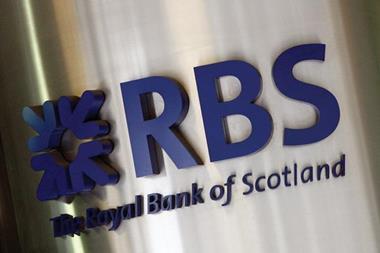Observers say bank will have to start by floating minority stake to hit EC deadline
The Royal Bank of Scotland will not be able to float 100% of its insurance arm in one go, according to a source – which could make it difficult to hit its self-imposed 2012 deadline for the spin-off.
RBS chairman Sir Phillip Hampton revealed at the company’s annual general meeting last week that the insurance arm would be sold in the second half of 2012.
But an investment bank source told Insurance Times that the bank would be likely to try floating a minority stake in the first instance, and said it would be surprising if it were able to float 50% in one go.
As well as its self-imposed deadline, there is a question mark over whether RBS will be able to hit the European Commission-imposed deadline of selling a controlling stake in RBS Insurance by the end of 2013.
RBS has to hive off the entire unit by the end of 2014. Should the bank miss its deadline, it may have to negotiate with the European Commission.
RBS’s most likely exit route from the insurance business is an initial public offering (IPO). RBS is considering either a trade sale or an IPO, but the size of the unit, which brought in premiums of £4.3bn in 2010 and had assets of £12.6bn, severely restricts the number of possible buyers.
“I don’t see who is an obvious buyer and that may mitigate achieving an overly attractive price,” Exane bank analyst Ian Gordon said.
“For that reason, an IPO must have a reasonably high probability of being the outcome. That is a realistic and pragmatic reflection of the likely lack of interest for a business of that scale.”
The company also faces the multiple challenges of restructuring and presenting itself as a standalone business to analysts and investors. Some feel it will have to step up its level of disclosure if it is to pique analysts and investors’ interests.
Arguably the biggest challenge, however, is returning the company to profitability. The firm made a loss of £295m in 2010. Poor financial performance could severely dampen prospects of a successful flotation.
One analyst asked: “The issue for them is: are they able to turn around the business and therefore get a better price for it ahead of the EC deadline?”
While RBS clearly has its work cut out in divesting RBSI, there is a sense that it will rise to the challenge. “I agree there is a lot of work but that is why they started it last year,” said the anonymous analyst.
Exane’s Gordon agrees divestment will be a challenge, but points out that the company has had plenty of practice at selling off units, including 318 branches to rival bank Santander and its Sempra commodities business to J.P. Morgan.
“It is certainly a significant piece of work, but one that they were looking to do voluntarily at the start of the crisis and are now required to do by the European Commission as part of the state aid sanctions,” he said.
It is the second time in recent weeks that RBS’s plans for its insurance arm have been questioned. Last month, RBS revealed it was targeting a return on equity (ROE) of 20% by 2013, which surprised many in the market who believed it was over ambitious.
A higher ROE means RBSI may have to give up market share
by focusing on underwriting profitability, but following a string of beat-the-competitor type deals across Direct Line, Churchill and NIG, the bank-owned insurer is giving every indication that it is going for growth.
Talking points
- RBSI has a market-leading position and strong brands, but will it be able to produce a solid year of earnings before its planned divestment in the second half of 2012? And can it persuade investors that it can continue to do so consistently?
- Will RBS be able to float enough of its insurance unit in time to meet European Commission deadlines? If not, would the EC be satisfied that it had taken enough steps to hit the deadline?
- If a flotation proves unrealistic, who would have the ability, or willingness, to buy the firm?






































No comments yet